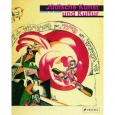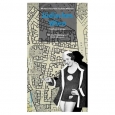Jewish Identity in Contemporary Architecture
Bilingual Edition
Author: Angeli Sachs, Edward van VoolenISBN(s): 9783791330570
Article Number: 999800015916
Language: DE/EN
Publisher: Prestel
Hardcover
176 pages
Bauaufgaben wie Museen, Synagogen, Gemeindezentren oder Schulen sind nicht nur Behausungen für die Aktivitäten jüdischer Gemeinden bzw. der Versuch, der Geschichte jüdischen Lebens Form zu verleihen, sondern auch Ausdruck des jüdischen Selbstverständnisses nach außen. Dieser internationale Überblick über die zeitgenössische Architektur für jüdische Institutionen zeigt an 15 Projekten die wichtigsten Architekturhaltungen und ihre Beziehung zum kulturellen Umfeld. Essays maßgeblicher Architektur- und Kulturhistoriker geben die notwendigen Hintergrundinformationen zum Verständnis dieses komplexen Themas.
Post-modernist theory dictates that a building has to do more than just provide a functional space: it also must express an idea. These 16 examples of schools, synagogues and museums suggest that Jewish contemporary architecture is at the very forefront of this trend. The Jewish Museum of Berlin is a pathway of sharp angles, like a deconstructed star of David; the Holocaust Museum of Houston has a wide brick chimney, a purposefully exaggerated reminder of the smokestacks of Auschwitz. Of course, these are architectural responses to the Holocaust and, as such, need to evoke a certain mournfulness. But why are the synagogues and schools designed with such harsh geometry? The New Synagogue of Dresden is supposedly based on the Temple of Jerusalem, but its walled courtyard, with a large, boxy structure at either end, suggests only a prison yard before exercise hour. The Jewish Primary School of Berlin is a remarkable series of shard-like wedges radiating from a central space, but the interior walls are exposed concrete—not exactly the best material for rambunctious seven-year-olds. Although a few introductory essays do provide some history, questions of form over function are not addressed by this book. Instead, the emphasis is on visual illustration: photographs and drawings dominate the pages. Thus, despite its ambitious title, this volume is really a coffee table book. Beautifully designed, it will grace the living room of anyone interested in modern architecture. But those who want to know why contemporary architects are reluctant—or unable—to evince that Judaism has its joys as well as its sorrows will need to look elsewhere.
CHF 100.00
SHOP!Wish List






